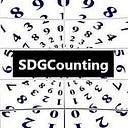How COVID-19 Is Affecting the Global Goals: SDG Report Summary
By Brady Press
Since April, our team has been monitoring how COVID-19 is affecting the Sustainable Development Goals (SDGs). With the release of the SDG Report 2020 at the United Nations High-Level Political Forum (HLPF), we now have comprehensive data on how the Goals were fairing before the pandemic as well as data on COVID-19’s initial impacts.
We recommend reading the report in full, but our summary below provides you the highlights. The data backing this report is available through the UNSTATS indicator database which was updated prior to the HLPF.
We Are Not on Track
Collectively, before the pandemic, the world was not on track to achieve any of the 17 Goals by 2030, as originally envisioned. COVID-19 has pushed progress further back in many areas. A lack of health, social, and economic data plays a big role as it hinders SDG progress and COVID-19 response. The figures below, taken directly from the report, present two roadblocks:
- Inconsistencies in the data available across countries by Goal
- Time lag for Goal data across countries
Measures to contain and respond to coronavirus are creating additional data challenges and, according to the report, “jeopardizing the production of data central to the achievement of the SDGs.” In one of the HLPF sessions on data, Francesca Perucci of the UN Statistics Division shared the following slide which illustrates data from the report on COVID-19’s impact on National Statistical Offices (NSOs) globally:
The report emphasizes the need for more investment in data and statistics, especially in low- and middle-income countries which have fewer resources. Currently, international investment in statistics is at half the level needed to achieve the SDGs.
SDG Status Updates
The UN report provides a status update on each of the 17 SDGs. The select SDGs in this article are those which appear to have been most impacted by the pandemic based on currently available data.
SDG 1, No Poverty
COVID-19 is causing the first increase in global poverty since 1998 with more than 71 million people at risk of being pushed into poverty in 2020. The global poverty rate is expected to mirror the 2017 level, undoing years of progress. The below figure shows old and new projections for 2020 and 2021:
The working poverty rate — employed persons living below $1.90 per day — is also expected to rise, after halving over the last decade.
SDG 2, Zero Hunger
The number of people going hungry has slowly increased over the last several years, with an over 9% increase in malnutrition in 2019 (690 million people) versus 2014 (630 million people) and a 3.5% rise in moderate to severe food insecurity since 2014. COVID-19 will put an estimated 132 million additional people at risk of undernourishment in 2020. The below figure shows food insecurity globally and by region up to 2018:
SDG 3, Good Health and Well-being
Before COVID-19, we were making progress on Goal 3, but not enough to achieve the Goal by 2030. By 2018, 121 countries had already met the SDG target on under-5 mortality and 21 countries were expected to do so by 2030. That said, 53 countries — 2/3 of which are in sub-Saharan Africa — were off track to meet the target. Maternal health also saw improvements with the maternal death rate dropping 2.9% each year from 2000–2017, but this is still way off the 6.4% annual reduction needed to reach the target by 2030.
The current crisis threatens to reverse decades of progress on health outcomes. For the above targets, hundreds of thousands more under-5 deaths are expected in 2020 along with tens of thousands of additional maternal deaths. Child immunization is also a major concern, as 24 million children in 21 lower-income countries are at risk of missing vaccines and 26 low- and middle-income countries are experiencing vaccine shortages.
Goal 4, Quality Education
Prior to COVID-19, 200 million children would likely still not be enrolled in school by 2030. Now, school closures across the world are increasing education challenges and deepening inequalities. While the switch to remote learning is an option for some students, others are disadvantaged by the digital divide. Per 2019 data, only 18% of African households have Internet access at home (compared to 87% in Europe).
When students return to in-person learning, many face existing challenges like lack of access to basic necessities: electricity, clean drinking water, and computer and internet access. Schools in sub-Saharan Africa, which also have the lowest percentages of trained teachers globally, are in the worst position:
Goal 5, Gender Equality
Despite some progress on this Goal, reported cases of domestic violence have increased globally during COVID-19 (and only 40% of women who experience abuse report it). Moreover, women have less access to support services right now. Current conditions may also lead to rising child marriage and female genital mutilation (FGM).
Additionally, women already performed an average of 3X more unpaid domestic and care work than men daily, as shown below, and are likely to take on additional care work in lieu of open schools and child care options. Even in the paid sector, women make up a disproportionate amount of “essential workers” in health care, cleaning services, and social work.
Goal 8, Decent Work and Economic Growth
The global economy began to slow in 2019, with the lowest growth since the economic downturn of 2009. COVID-19 has further slowed economic growth, disrupting the world’s labor markets and causing the highest increase in unemployment since World War II. For those who are working, the pandemic threatens their health and safety.
The informal sector and workers who are self-employed, daily wage earners and workers in the “hardest hit” sectors, such as tourism, face disproportionate risks. As of 2016, the percentage of informal employment by region was:
Goal 9, Industry Innovation and Infrastructure
Notable gains have been made with Goal 9 in recent years, but COVID-19 may stop or reverse progress. Major disruptions in the manufacturing and transport industries are affecting the global value chains and product supply, and hurting employment in these sectors. The graphs below capture significant declines in aviation and manufacturing in 2020, globally:
Goal 17, Partnerships for the Goals
Leaders at the UN have said throughout the pandemic that embracing multilateralism and partnerships is crucial to combating COVID-19. Yet, as a result of the pandemic, global remittances to low- and middle-income countries are expected to decline by 20% — the most severe drop in recent history. Moreover, foreign direct investment (FDI) could decline by up to 40% in 2020.
Where do we go from here?
The COVID-19 pandemic has revealed how interconnected progress on the SDGs is with society, and how vulnerable the Goals are to setbacks. Remaining committed to the 2030 Agenda will not only help the global community respond to these disruptions, it will also provide the resources and resiliency required for future crises. Additionally, the importance of quality timely data is more evident now than ever. Thankfully — as long as we maintain our engagement with the SDGs — we have the framework to move forward.
Brady Press is an Associate Director at Changing Our World, where she specializes in building strategic corporate citizenship programs. She is a consultant to SDGCounting and StartingUpGood, and is currently researching how COVID-19 is affecting the Sustainable Development Goals.

